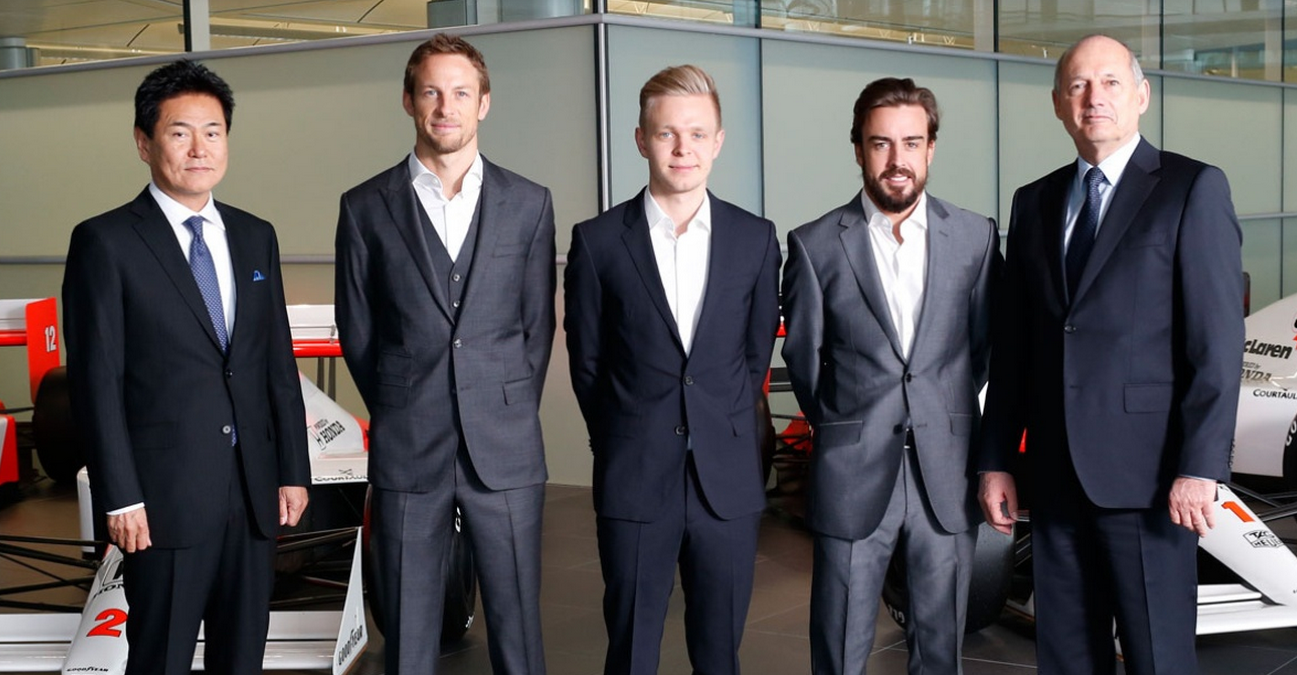
The three-week gap between the end of the opening fly-away races and the beginning of the European campaign marks a natural break in the 2015 Formula 1 World Championship.
Just as importantly, it marks a good opportunity to take stock; to both look back and look forward.
We sat down with three of the architects of McLaren’s competitive fortunes – racing director Eric Boullier, director of engineering Matt Morris, and chief engineer Peter Prodromou – for a full assessment of just what’s changing at McLaren, how the team has evolved beyond comparison over the past 12 months, and just what lies ahead for the McLaren-Honda partnership.
It makes for fascinating reading.
MP4-30: A FRESH START
Famously labeled a ‘Size Zero’ Formula 1 car when it was revealed to the world back in January, MP4-30 marked a substantial philosophical departure from the McLarens that went before it. It’s signaled a fresh approach within the company, too.
Peter Prodromou: “Over the last couple of seasons, the team slightly lost its way aerodynamically. It became obvious that if we’d carried on with the previous concept, there’d only be so much we could achieve.
“So we’ve begun to establish a new aerodynamic concept, and a different way of working, too. That new concept has majorly shaped where the team’s heading in the future.”
THE CHANGING FACE OF THE ORGANISATION
As well as the new car, the team itself has received a bit of a makeover: a thorough restructure last year has created both a different philosophy and a faster way of working.
Matt Morris: “People within the organisation feel more involved in the car than perhaps they’ve done in the past. Before we restructured, some people felt they were just doing what they were told rather than being part of the process. Now, people feel more empowered: a piece of the car is theirs, and they take pride in that.
“Even though we aren’t yet where we want to be, our people can see that we’re getting there.”
Eric Boullier: “I agree, there’s been a huge change in overall culture and philosophy. At every level of the company, there is clear leadership. We agree the direction we want to pursue, and we bring people with us. The attitude has changed from ‘telling’ people, to ‘asking’ people; we’ve integrated people, and we share opinions and ideas.
“The main outcome of that new approach is that people now have a sense of ownership in the car. And they’re more motivated and interested as a result. To give you an example, I guess about 50 per cent of the upgrades we brought to the track last year didn’t completely work; this year, we’ve brought that down to about five or 10 per cent.”
Matt Morris: “And we’re much more structured in the way we bring new parts to the track. The rate of progress is much faster, so we don’t need to build as many new components, because we know they’ll be updated in just a few races’ time. That speeds up the whole process.”
Eric Boullier: “There’s tangible change at the factory, too: we’ve invested in some new Mazak machines and updated and upgraded a few old ones. In doing so, we’ve been able to increase our in-house manufacturing capability by around 30 per cent – which makes our development cycle lighter, faster and more flexible.”
ALONSO AND BUTTON: A WINNING COMBINATION
Logic would suggest that hiring two world-champion drivers helps you win races and championships. It does; but it has plenty of fringe benefits, too – as the engineers have discovered, our drivers’ feedback has been phenomenal.
Peter Prodromou: “We’re massively privileged to have Fernando and Jenson as our drivers. I can’t overstate how privileged we are – it’s a very good position to be in.”
Eric Boullier: “The driver line-up has made a big difference. Jenson’s attitude and feedback have always been phenomenal, but this year he’s raised his game again. Our drivers are really committed: they’re world champions, they want to win again, they believe in the project, and they’re pushing hard. They don’t leave anything on the table in terms of performance, which is fantastic.
Peter Prodromou: “Aside from their talent, and ability to win races and championships, they are without a doubt the most important sensor fitted to the car. That might sound glib, but their feedback is incredibly important, and they do a brilliant job. They’re pretty good sensors.”
Eric Boullier: “Yeah, expensive sensors!”
WHAT COMES NEXT?
The opening four races have seen progressive improvement. The aim for the remainder of the year is to keep bringing performance upgrades to every grand prix – right through until the final race of the year.
Peter Prodromou: “Next year’s car will be an evolution of this year’s, so we need to keep developing it right until the final race.”
Matt Morris: “The 2016 regulations aren’t significantly changing – and we’re not going through the process of introducing a new engine, as we’ve done for the last two years [2014’s turbo-hybrid Mercedes-Benz, and this year’s Honda], so we’ll keep developing. A lot of what we learn at the track this year will naturally evolve into next year’s car.”